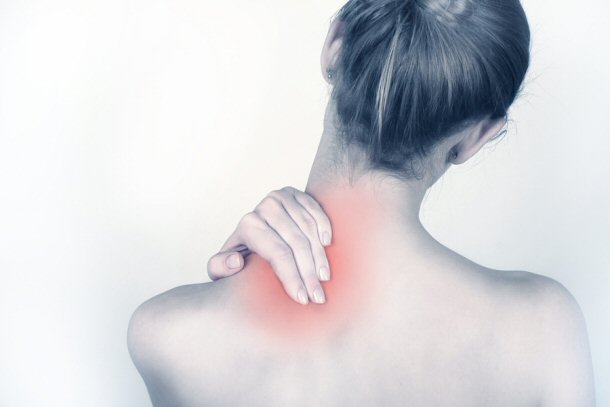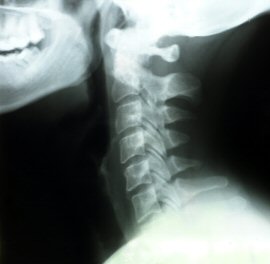Pinch Nerve: The Cause of Remote Pain

A pinch nerve is a health problem that occurs when the surrounding tissues
compress a nerve at a point along its length. Consequently, the compressed part
of the nerve interferes with its normal functions. Therefore, a pinch nerve
cannot effectively transmit signals from or to the brain. Furthermore, the
condition can cause discomfort to the patient ranging from numbness to
unbearable pain. The doctor may not immediately diagnose pinch nerve because the
patient feels the symptoms far from the pinch area. This article describes pinch
nerve: types, causes, symptoms, diagnosis, and treatment.
Causes of Pinch Nerve
There are six common causes of pinch nerve. First, a herniated disc can compress
the nerve. This occurs when one or more of the discs that separate the bones of
the vertebral column rupture. Consequently, the soft internal contents of the
disc protrude into the spinal canal and compress the spinal cord. Lifting heavy
loads can cause disc rupture. Furthermore, a hard hit on the back can cause disc
rupture: as in a bathroom fall or motor vehicle accident. Second, the spinal
canal, through which nerves and spine pass, can become narrower. Spinal stenosis
is the medical term for this condition that usually occurs due to old age. The
bones and discs that form the backbone can become dry and thicken as you advance
in age. Consequently, the bones can protrude into the spinal canal and make it
narrow.
Besides, swollen tendon sheaths and degenerated and thickened ligaments can
swell and make the spinal canal narrow. Third, arthritis can make some of the
vertebrae and the discs of the backbone to bulge into the spinal canal.
Consequently, arthritis of the backbone can cause spinal stenosis. Fourth, bone
spurs can cause pinch nerve by either compressing the nerve or narrowing the
spinal canal. Spurs are growths on normal bones. Another name for bone spurs is
osteophytes. The bone can grow due to pressure or old age. Fifth, swelling of
the tissues around the nerve can cause pinch nerve. A bruise or injury can cause
the swelling. Furthermore, bulging of extremities in pregnant women can cause
the swelling. Lastly, some patients inherit the risk of developing pinch nerve.
Symptoms of Pinch Nerve
The common symptoms of pinch nerve include pain, weakness, tingling, and
numbness of the muscles it innervates. The patient feels the symptoms of a pinch
nerve on the parts of the body it innervates. They can appear near the location
of the pinch or at a remote part of the body. For instance, the patient can feel
the symptoms of a neck pinch nerve from the neck up to the arm: stiffness or
pain. Likewise, the symptoms can affect the back up to the leg for a lower back
pinch nerve.
There are three common pinch nerve conditions. First, scartica is a condition
caused by pinch scartia nerve, which innervates the buttocks and the legs. The
condition causes numbness, pain, and weakness of the muscles of the buttocks and
legs. Second, pinched ulna nerve causes cubital tunnel syndrome. The ulna nerve
is in the elbow. The symptoms occur in the small fingers, ring finger, and
forearm.
Long periods of repetitive activities can cause the syndrome. Such activities
include work in assembly line and typing. Lastly, carpal tunnel syndrome occurs
when the median nerve is pinched. The median nerve is in wristís confined
tissues. The syndrome causes numbness, weakness, and pain in the index, middle
fingers, wrist, and thumb. Repetitive work and diabetes can cause swelling of
the tissues that can lead to this syndrome.
Diagnosis of Pinch Nerve
 The doctor can carry out some tests to identify the pinch nerve. The information
the doctor requires to identify the affected nerve includes work history, family
medical history, medical condition and history, and nature and location of the
symptoms. First, he carries out physical examination at the areas where the
patient feels the symptoms. During these examinations, he tests strength of the
patientís sensation and muscle tones. The doctor can carry out some tests to identify the pinch nerve. The information
the doctor requires to identify the affected nerve includes work history, family
medical history, medical condition and history, and nature and location of the
symptoms. First, he carries out physical examination at the areas where the
patient feels the symptoms. During these examinations, he tests strength of the
patientís sensation and muscle tones.
Second, he can carry out tests to find the pinch nerve. The doctor can use
Computerized Tomography (CT) scan, Magnetic Resonance Imaging (MRI) scan,
Straight Leg Raise test (SRL), or Myelogram to confirm the pinch nerve. The CT
scan uses x-rays. However, the MRI scan uses magnetic and radio waves and helps
avoid x-ray exposure. A negative SRL confirms absence of a herniated disc in the
lower lumber. Myelogram method involves scanning with x-ray after injecting a
tracer material into the spinal cord. The x-ray film can show a herniated disc.
Lastly, he carries out tests to find the location of the pinch. The doctor
can use Electromyogram and Nerve Condition Studies (EMG/NCS) for this test. This
scanning method uses electrical impulses. It involves measuring the speed of a
mild electrical impulse in the nerve. The doctor passes the impulse into the
nerve by inserting a needle into the muscle that the nerve innervates. He then
asks the patient to contract the muscle. The speed of the impulse reduces at the
pinch.
Conservative Treatment for Pinch Nerve
 You can use the following four conservative methods simultaneously to treat
pinch nerve. First, pinch nerves usually heal on their own if they are given
time. However, the patient should avoid activities that would put pressure on
the nerve. Therefore, doctors usually advice patients of pinch nerve to rest.
Second, ice and heat can ease pain and muscle spasms by making the muscles
relax. You can apply warm water to the effected muscle using a bottle with a
small hole. Leave it for some time then apply ice. Third, you can use
physiotherapy to stretch and strengthen body muscles. This helps relieve
pressure on the pinch nerve. Lastly, you can use anti-inflammatory drugs such as
pregablin (Lyrica), gabapentin (neurontin), naproxen, and ibuprofen. You can use the following four conservative methods simultaneously to treat
pinch nerve. First, pinch nerves usually heal on their own if they are given
time. However, the patient should avoid activities that would put pressure on
the nerve. Therefore, doctors usually advice patients of pinch nerve to rest.
Second, ice and heat can ease pain and muscle spasms by making the muscles
relax. You can apply warm water to the effected muscle using a bottle with a
small hole. Leave it for some time then apply ice. Third, you can use
physiotherapy to stretch and strengthen body muscles. This helps relieve
pressure on the pinch nerve. Lastly, you can use anti-inflammatory drugs such as
pregablin (Lyrica), gabapentin (neurontin), naproxen, and ibuprofen.
Surgery for Pinch Nerve
 Doctors use surgery as a last resort when conservative methods fail to treat the
symptoms, the patientís condition is deteriorating fast, and the pinch nerve is
life threatening. For instance, a pinch nerve caused by a herniated disc can be
life threatening and may require emergency surgery to extract the disc. If the
surgeon removes a large portion of the disc, he can perform spinal fusion to
fill the gap created. Furthermore, the fusion makes the spine stable and helps
avoid another pinch nerve. The technique the surgeon uses depends on the
location of the pinch. Doctors use surgery as a last resort when conservative methods fail to treat the
symptoms, the patientís condition is deteriorating fast, and the pinch nerve is
life threatening. For instance, a pinch nerve caused by a herniated disc can be
life threatening and may require emergency surgery to extract the disc. If the
surgeon removes a large portion of the disc, he can perform spinal fusion to
fill the gap created. Furthermore, the fusion makes the spine stable and helps
avoid another pinch nerve. The technique the surgeon uses depends on the
location of the pinch.
Diseases & Conditions
Top Lists:
Top 10 Most Common Genetic Disorders
Top 15 Most Disturbing Skin Conditions
10 Unusual Phobias
Informational:
Diverticular Disease and Diverticulitis
What is Turner Syndrome and Why Does it Affect Only Females?
Alice in Wonderland Syndrome and How to Treat the Symptoms
Herniated Disc: Symptoms and Treatments
Pinch Nerve: The Cause of Remote Pain
Dealing With a Child Who Has a Fever
How Unhealthy Diet Could Trigger Inflammatory Arthritis
Phobias: Understanding How They Develop and Treatments
Depression Facts, Symptoms & Treatment
Earaches - Causes and Treatments
Symptoms of Borderline Personality Disorder and How to Deal with It
Seasonal Affective Disorder: Does Light Therapy Help?
What Really Causes Dandruff and How Can You Treat the Symptoms
Treating Plantar Fasciitis or Heel and Arch Pain
Symptoms and Treatments of Aplastic Anemia
Using Sclerotherapy to Get Rid of Varicose Veins
Are the Side Effects of HGH Supplements Worth It?
ADD/ADHD Symptoms and Treatment
What are the Options for Hair Loss Treatments
Options for Frontal Hair Loss Treatment |